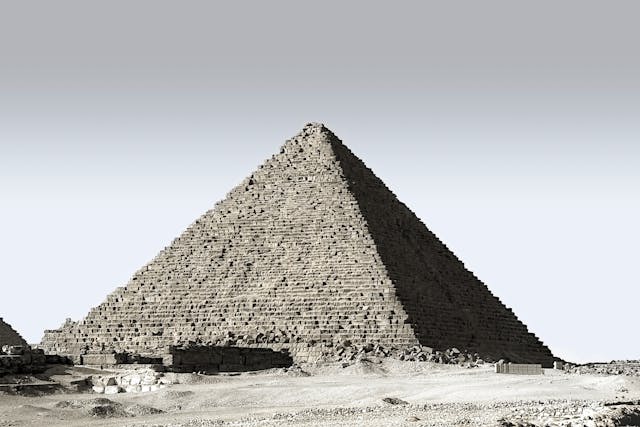
How does carbon dating work? Carbon dating allows scientists to estimate the age of something by counting the number of carbon-14 atoms that are left.
Carbon-14 is created in our atmosphere and is absorbed by all living organisms. It is created when cosmic rays impact nitrogen atoms in our atmosphere. A cosmic ray is a group of high-energy particles that have come from outside our solar system or were created in the sun. They are usually atoms that don’t have any electrons. They travel at almost the speed of light. They cannot travel at the speed of light because they have mass and nothing with mass can travel at the speed of light without infinite energy. When these cosmic rays reach our atmosphere, they whizz through and out the other side, unless they happen to hit an atom. When they hit an atom in the atmosphere, they can create an energetic neutron. A neutron is a particle that isn’t positive, like a proton, or negative, like an electron. When this energetic neutron collides with a nitrogen-14 molecule (of which there are a lot in the atmosphere), they combine to make carbon-14. This carbon-14 combines with oxygen to make carbon dioxide, which ends up inside all living things. Plants take in carbon dioxide in order to photosynthesize and we produce carbon dioxide through our bodily processes.
In our bodies, and in every living thing, the carbon-14 atoms decay, but they are always replaced. We have a constant amount of carbon-14 in our bodies throughout our lives and that is the same for all of us. Every living thing contains carbon-14 that is constantly replenished. However, when that living organism dies, the carbon-14 stops being replaced, and that is how carbon dating works. Scientists can look at how much carbon-14 is left and compare that number to a still living organism.
How does knowing how many carbon-14 atoms are left tell scientists how old something is? If scientists know how many carbon-14 atoms are left, and they know how long it takes the atoms to decay, they can calculate how long that particular organism as been dead. To do that, they need to know the half-life of carbon-14 atoms.
All atoms have a half-life. This is the amount of time it takes for half of the atoms to decay. All atoms contain energy. That energy won’t stay in the atom forever and it will escape at some point. When it does escape, the atom will decay and will become a different atom. For example, when nitrogen-14 gains energy from a cosmic ray it becomes carbon-14, and when carbon-14 loses energy through decay, it becomes nitrogen-14 again. The half-life for carbon-14 is how long it takes half of the carbon-14 molecules to become nitrogen-14, which is 5,730 years. A half-life, is an average more than a hard and fast rule. Not all carbon-14 atoms will decay at the same rate. If you have two carbon atoms, it won’t take 5,730 years to have one. What it means is that, within the half-life of the atom, on average, half of the atoms will have decayed and become other atoms. After another 5,730 years, there will be half again (a quarter), then an eighth, and so on. When scientists want to carbon date the age of something, they take a piece of it and analyze it to find how many carbon-14 atoms are left. They compare that to the original, then using the half-life of 5,730 years in their calculations, they can roughly work out the age of whatever it was. This only works with things that were made of organic matter. Also, it only works on things that are less than about 100,000 years old because there is not enough carbon-14 left after that. Rocks and other items can be aged by using uranium, or other atoms, but the nuclear tests after World War 2 put a lot more of these atoms into the atmosphere and have messed up the calculations.
All atoms have different length half-lives. Some atoms have very short half-lives. Hydrogen-5 has a half-life of 86 yoctoseconds, which is 0.0000000000000000000000086 seconds. And some atoms have very long half-lives. Uranium-238 has a half-life of 4,468,000,000 years, or about the age of our planet. Obviously, scientists haven’t watched objects filled with these elements to see how long it takes for half of them to decay into another element. They could do that with the shorter ones, but not the longer element. What they do is measure the number of the element in the object and then measure it again a few hours or a few days, or even a few years later, to see how it has changed. Then they can calculate the half-life from that. And this is what I learned today.
Photo by Simon Berger: https://www.pexels.com/photo/photo-of-great-pyramid-of-giza-1166011/
Sources
https://news.uchicago.edu/explainer/what-is-carbon-14-dating
https://en.wikipedia.org/wiki/Cosmic_ray
https://science.howstuffworks.com/environmental/earth/geology/carbon-14.htm
https://energyeducation.ca/encyclopedia/Half_life
https://en.wikipedia.org/wiki/Half-life
https://www.epa.gov/radtown/radtown-radioactive-atom-teacher-information
https://en.wikipedia.org/wiki/List_of_radioactive_nuclides_by_half-life
